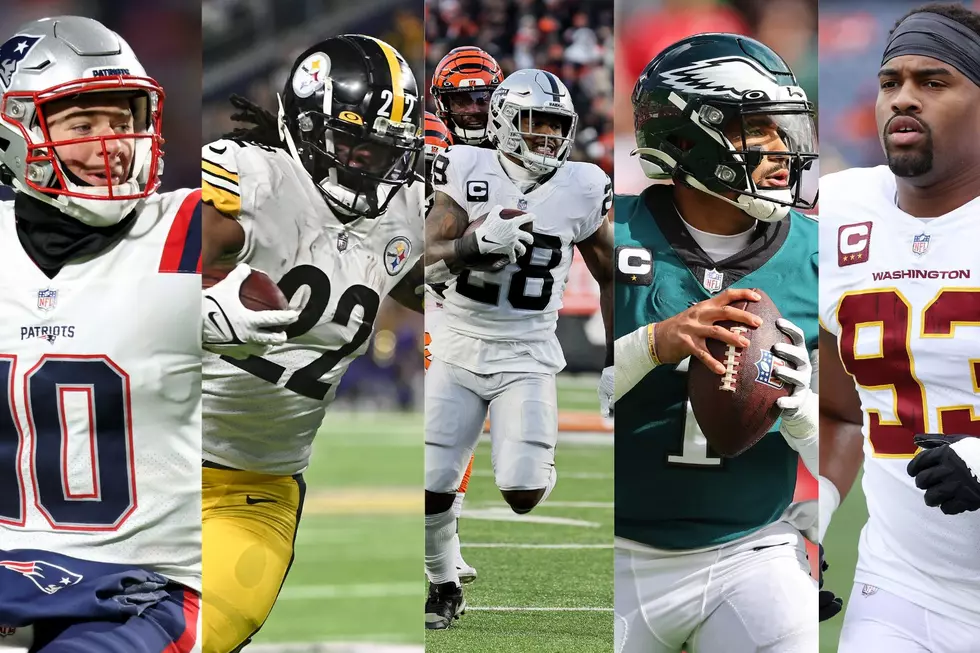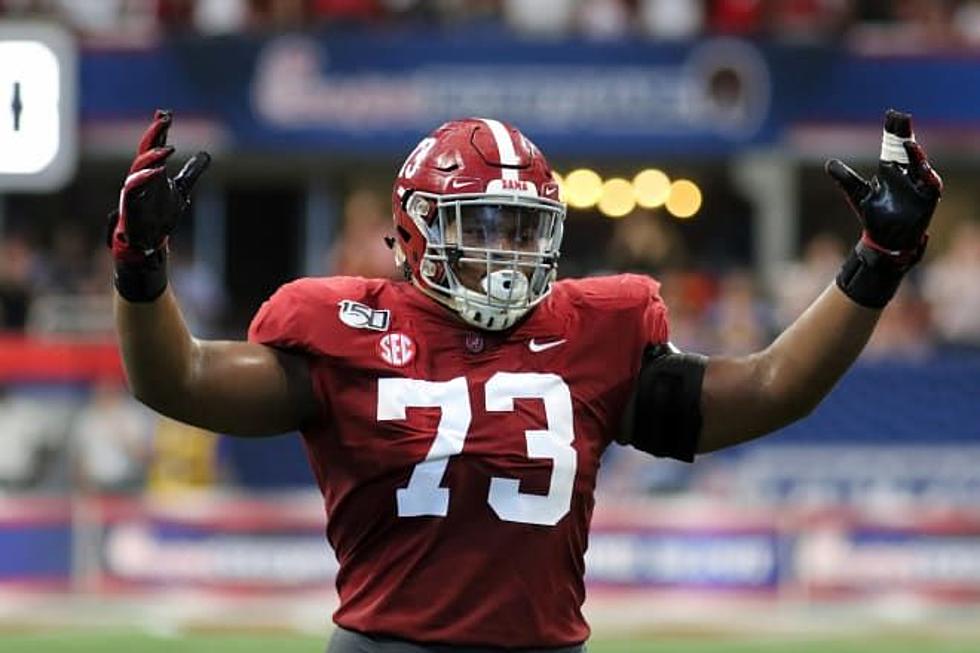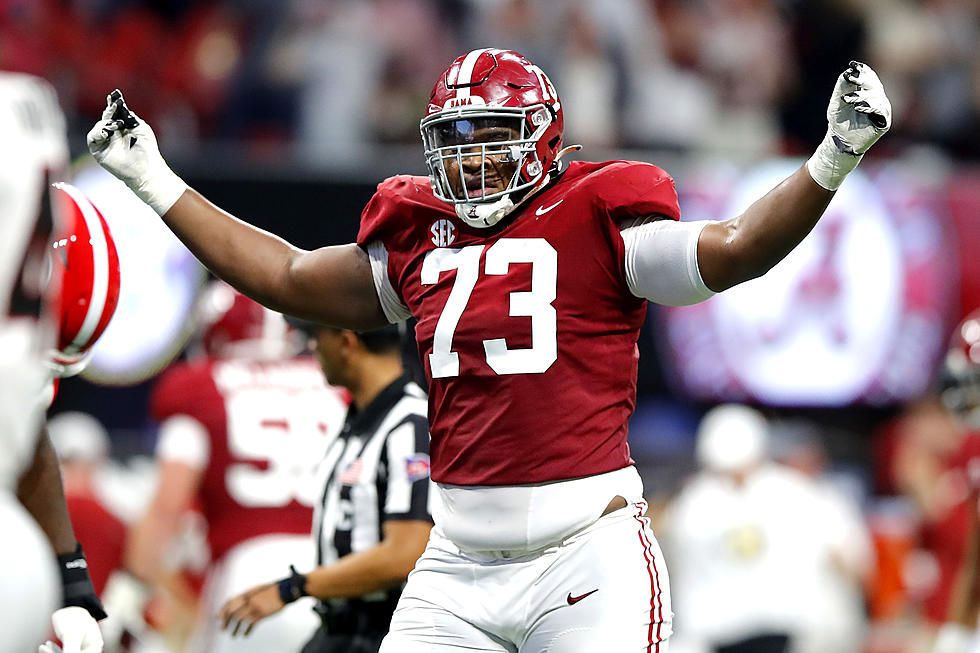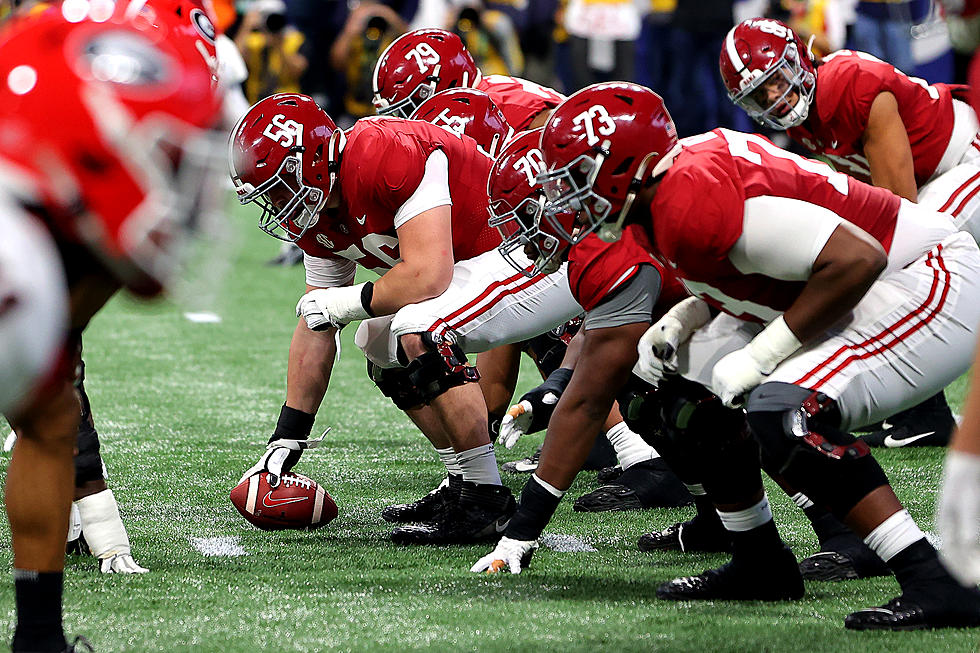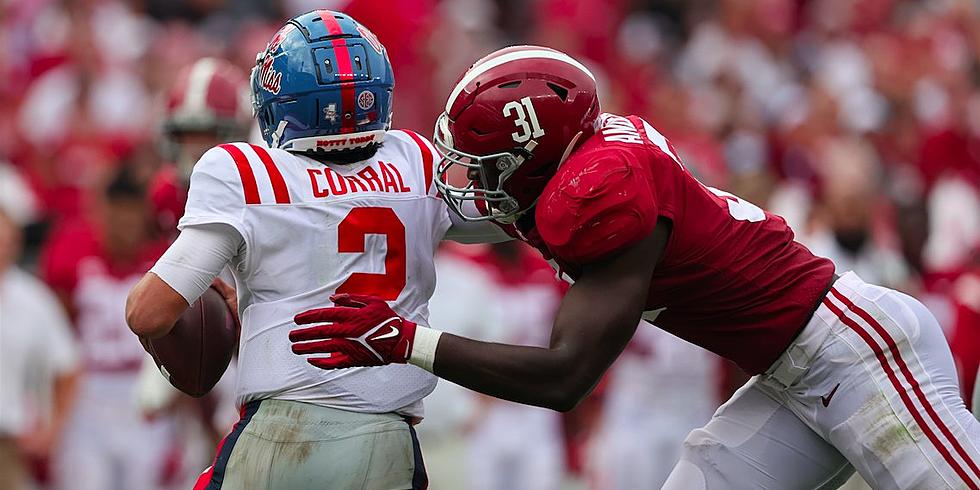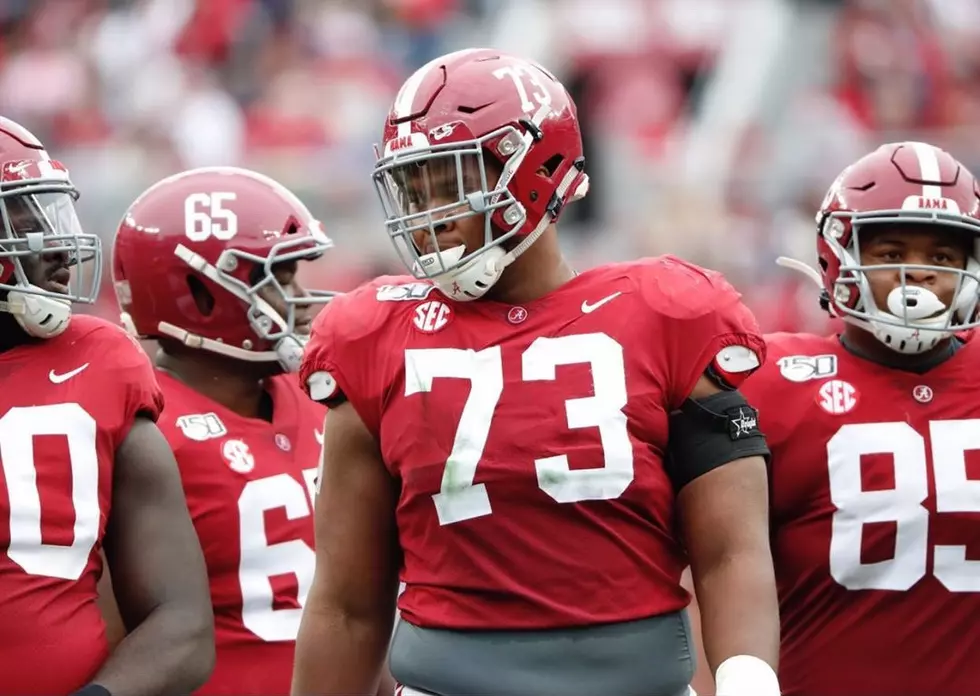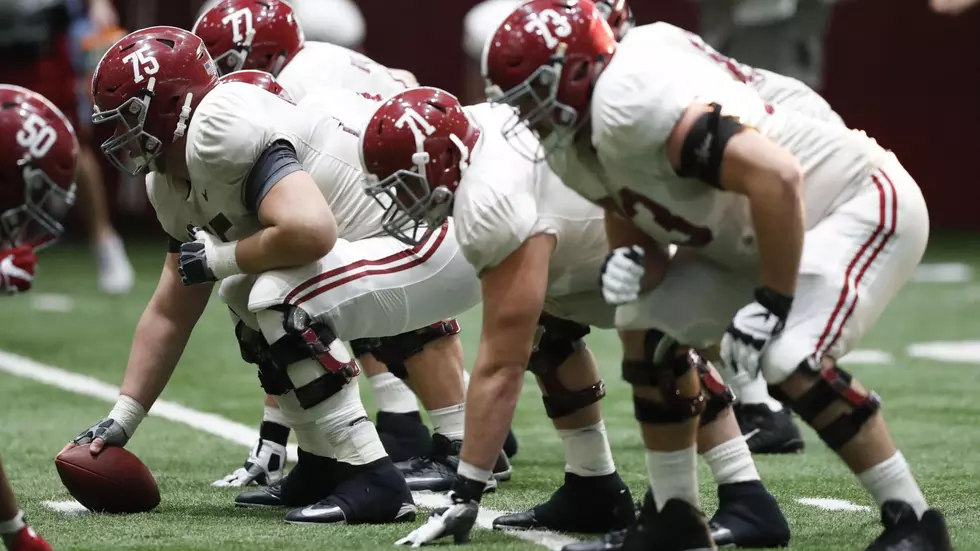
SEC Network Analyst Cole Cubelic Breaks Down Alabama’s O-Line

Alabama's offense is expected to again rank among the best in college football in 2020, and the Crimson Tide's offensive line should be one of its most experienced groups during coach Nick Saban's tenure.
With less than a month until the team's season opener at Missouri on Sept. 26, SEC Network analyst and former Auburn center Cole Cubelic joined Tide 100.9 to break down position changes on Alabama's O-line and the competition at center.
The Alabama offensive line returns four of five starters from 2019. What we know is that Alex Leatherwood is slated to be the starting left tackle and Deonte Brown and Landon Dickerson are on track to take two of the three interior positions.
But where does that leave sophomore Evan Neal, who was recruited at tackle but started all 13 games at left guard last year? If he stays there, who will be the new right tackle? And if he kicks out to right tackle with Brown and Dickerson are the guards, who becomes the new center?
Cubelic, who started 18 games at center for Auburn from 1998 to 2000, said Neal played well at left guard last year but occasionally got his weight too far out over his feet, causing balance issues that could re-surface at right tackle.
"There were a lot of times at guard last year that his feet kinda got him in trouble. So I could see that potentially, maybe, not saying definitely, being a problem for him at tackle," Cubelic said.
It's not that Neal's footwork is poor; it's just that his 6-foot-7, 360-pound frame sometimes makes it difficult to change direction.
On the other hand, Neal's stature can help mask technical mistakes like that.
"He's got length, first and foremost, and that gives you a big advantage playing tackle. He's a massive body, so if you're working on him in pass pro, it's gonna be a lot more difficult to get around him than it is a lot of other guys," Cubelic said. "I don't think all of those [issues] are the most important factors, because he's got enough God-given ability to be able to handle it. So that's what matters when it all comes down to it."
Cubelic is familiar with Neal's game, having watched him before college at the Under Armour All-American Game in January 2019. But despite Neal's 5-star status, it was a different Alabama commit at the All-American Game who Cubelic thought was the most ready to play right away: Darrian Dalcourt.
"Technically, he was very sound [in] understanding where hands and feet needed to be on very play," Cubelic said. "He seemed to have really good body control and body balance, as in he didn't get out over his toes, he wasn't falling left or falling right when he was in pass protection and guys weren't throwing him off in run-block situations. That kind of stuff is you either have it or it takes a long time to really begin to understand it. And he seemed to have it.
"He understands how to stay compact and how to not get over-extended, and that's not easy. I felt like he had good power, and I felt like he knew how to come off the ball flat-backed and he was just a guy that I was impressed with."
Cubelic explained that "staying compact" can encompass many things. It can mean that an O-lineman keeps his weight over his feet in the run game so he doesn't lose balance. It can mean keeping his steps the right length and direction so he doesn't have to over-correct with his next step. It can mean not over-reacting to a pass rusher's move so much that he allows a free lane to the quarterback.
In addition to technique, though, coaches have to consider experience and stature when evaluating which lineman is the best option. Experience is especially crucial at center, because he has to know enough about both his own offensive scheme and defensive strategies to make the calls to the rest of the line.
Good centers also are comfortable with changing the call on the fly and picking up blitzing linebackers. Alabama's run schemes are more diverse than most college teams, too, so that adds another element that the center must be familiar with.
Among the three players competing at center — Dalcourt, fifth-year senior Chris Owens and redshirt sophomore Emil Ekiyor Jr. — Owens has by far the most experience. He's been at Alabama since Ekiyor was a junior in high school and since Dalcourt was a sophomore. Though Ekiyor is a year ahead of Dalcourt, he's considered the third option at the position.
When it comes to stature and build, both players are listed at 6-foot-3, but Owens is 15 pounds heavier than Dalcourt, weighing in at 315 pounds. There are successful NFL centers with both body types, Cubelic said, but Owens gets the edge due to his stockier and "beefier" body type.
"I don't think that there's a big differential in talent," Cubelic said. "... I think if you're talking about being able to hold up, [Owens] gets an immediate advantage just because of the way that he's built."
If Owens does win the starting job, it would likely be his experience that pushed him over the top. Cubelic said if all else is equal, put the safest bet at center, and with Alabama's other four linemen totaling 80 career starts, Owens would fit right in with one of the most experienced offensive lines in coach Nick Saban's tenure.
"When you have a veteran group, you can do some subtle tweaks," offensive coordinator Steve Sarkisian said. "You can do some things with those guys that maybe you couldn't do with a younger group."
Alabama 2020 Offensive Players
More From Tuscaloosa Thread
